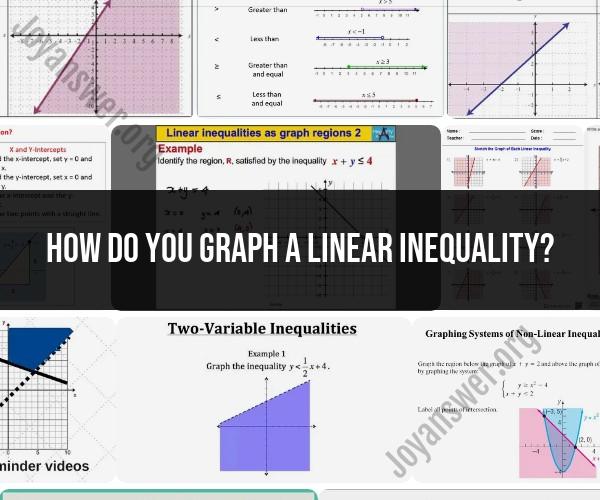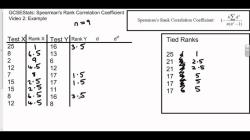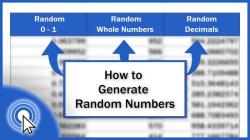How do you graph a linear inequality?
Graphing a linear inequality involves representing the solution set of the inequality as a shaded region on a coordinate plane. To graph a linear inequality, follow these steps:
Identify the Type of Linear Inequality:Determine whether you are dealing with a "less than" (<) or "greater than" (>) inequality or an "less than or equal to" (≤) or "greater than or equal to" (≥) inequality. This affects whether you will use a dashed or solid boundary line.
Rewrite the Inequality in Slope-Intercept Form:If the inequality is not already in slope-intercept form (), where is the slope and is the y-intercept, you should rewrite it in this form. For example, if you have , rewrite it as .
Graph the Boundary Line:Plot the boundary line represented by the equation from step 2. Use the slope () to find a second point if necessary, and connect the points with a solid or dashed line based on the type of inequality:
- If it's a "<" or ">", use a dashed line since the points on the line are not included in the solution.
- If it's "≤" or "≥," use a solid line since the points on the line are included in the solution.
Choose a Test Point:Select any point that is not on the boundary line. Ideally, choose a point that is easy to work with, such as (0,0), if possible.
Test the Inequality:Substitute the coordinates of the test point into the original inequality. If it satisfies the inequality, proceed to step 6. If it doesn't, choose a different test point.
Shade the Appropriate Region:Based on the test point's result:
- If the test point satisfies the inequality, shade the side of the boundary line that includes the test point.
- If the test point does not satisfy the inequality, shade the opposite side of the boundary line.
Label the Shaded Region:You can label the shaded region with the inequality (e.g., ) to indicate which side of the boundary line is part of the solution set.
Add Arrows:If your boundary line extends infinitely in both directions, add arrows to indicate that the shaded region continues indefinitely.
Finalize the Graph:Check to make sure your graph is complete and accurately represents the solution to the linear inequality.
Remember that the final graph should show the region of the coordinate plane where the inequality is true. Linear inequalities are often used to model constraints or conditions in real-world problems, so understanding how to graph them is a valuable skill in various fields such as economics, engineering, and optimization.












